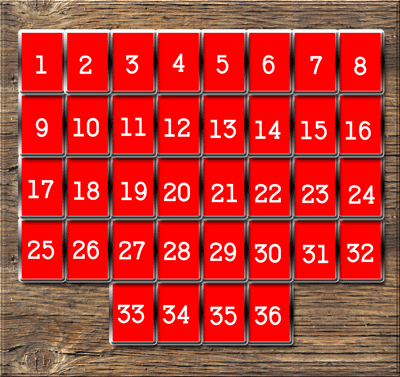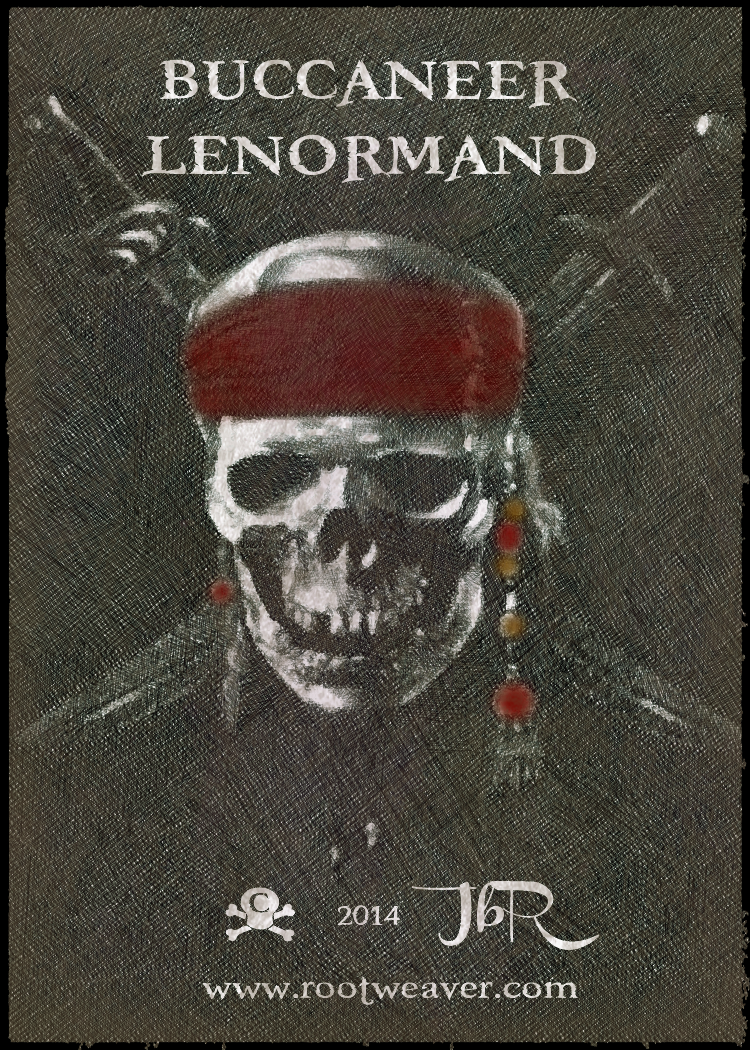JbR’s Lenormand Journal: Houses

When I first read about the Lenormand Houses I was utterly confused! But, it is actually very simple.
Lenormand Houses
As we already know, there are 36 cards in a traditional Lenormand deck, there are also 36 Houses. The Houses are a kind of  ‘foundation’ or spread onto which cards are laid during a reading.
For the purpose of this exercise, lay out your entire deck in consecutive number order from 1 to 36 in a grid as shown in the illustration above. 4 rows of 8 cards plus a final row of 4 cards. Or if you prefer, a 4 x 9 grid. These are called the ‘Houses.’ The Houses are nothing more than fixed assigned positions in the Grand Tableau spread, these add context to the cards that land on them in a reading where cards are usually randomly selected.
Examples: Â the 28th House (the ‘Man’ card) indicates the position of the male querent (or female querent’s spouse;) and the 34th House (the ‘Fish’ card) indicates the position of money or resources. It is to this position that we will go if we’re looking to glean insight into the querent’s finances. Once we are confident readers we could move around this grid with our eyes to pick out relevant topics for discussion as they relate to the querent’s reading.
Remember the Keywords assigned to each card in my first post – Basic Keywords? These meanings are still applied as before.  House # 33 in the grid above is the house of the Key (card 33.) Therefore, it is in this House that we will look for a ‘solution’ to the querent’s question as one of the Key’s keywords is solution. House # 12 is the house of the Birds (card 12,) offering the context of conversation which may be an indication of what needs to be talked about (or who is gossiping about the querent.)
I read an excellent analogy in the Lenormand Cards Study Group on Facebook. It was suggested by Mary K. Greer that the Houses can be seen as a town map depicting the buildings, tourist attractions and places of interest. The cards that land on these houses are seen as the ‘visitors’ to these buildings. P. Williams added that the visitor does not modify the house, rather the house preoccupies (modifies) the visitor. He gave a further analogy saying that we (the visitor) dress and behave appropriately when visiting the opera. So too does the Card behave in accordance with the ‘rules of the House.’ Mary Greer offered an example: The Heart (Card #24) can be temporarily preoccupied by the House of Whip, which could imply a ’50 Shades of Grey’ scenario. 💥ðŸ˜
Now that we know the card meanings as well as how they apply to the Houses we can start looking at how to read the cards. In short, a Grand Tableau is a large spread using all the cards in a deck. These cards are laid out on top of the Houses. But, before we get to the Grand Tableau we still have a bit of groundwork to do.
To ensure that you don’t miss a post in this series, please follow my blog.
JbR xxx

